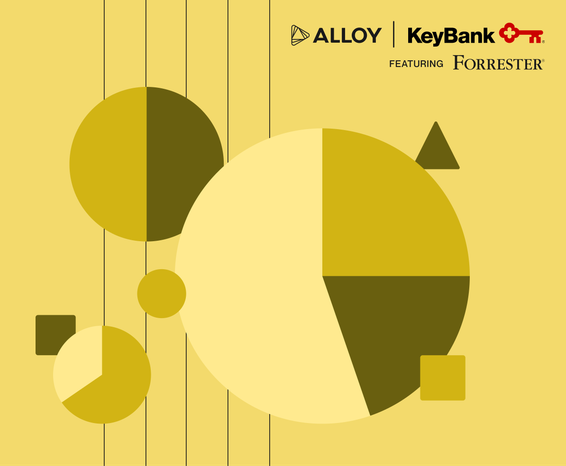Share
The competitive advantage of fraud prevention
Feb 10, 2025
Is it time to add fraud prevention to your financial institution or fintech’s growth strategy?

Key takeaways
- 69% of consumers say that fraud protection is a top consideration when choosing a financial service provider, outranking "ease of use," "good customer service," and "good value for money."
- Treating fraud as a competitive advantage unlocks friction-right customer experiences, revenue growth, better resource allocation, and stronger relationships.
- Financial organizations like Live Oak, Novo, and Grasshopper have reported significant time savings and customer growth from their fraud prevention strategies and solutions.
Distilled to its absolute most basic form, fraud prevention is a pretty straightforward concept:
"Good-action-stops-bad-action."
But what if fraud prevention were more than just a way to keep fraudsters out? What if it were also a strategic advantage that propels your business forward?
There are two mindsets in fraud prevention
Prevention as a requirement
We tend to think about fraud in terms of losses and expenses. What that means is that for most financial institutions, fraud prevention has long been viewed as a necessity instead of an opportunity.
Viewing fraud prevention as a requirement frames it as a net negative — a costly but unavoidable part of doing business. While this approach may satisfy regulatory requirements or keep losses down, it keeps fraud prevention siloed within risk and compliance departments.
Prevention as an advantage
Financial organizations are beginning to integrate fraud prevention into their broader business and banking transformation strategies. From the perspective of fraud prevention as an advantage, banks, fintechs, and credit unions begin to see their regulators as customer experience (CX) collaborators and fraud prevention as the key to unlocking smart growth.
Recommended for you: Why your fraud model is broken
Your fraud prevention benefits are informed by your financial organization’s mindset and tools
When we shift our perspective on fraud prevention from a necessary cost to a strategic advantage, we unlock benefits that extend beyond basic risk mitigation and regulatory compliance. Here are four of them:
1. A friction-right customer experience
Nobody wants their account to be taken over by a fraudster. According to FICO, 69% of consumers rank good fraud protection in their top three considerations when choosing a financial service provider, higher than "ease of use," "good customer service," and "good value for money."
At the same time, customers expect seamless access to their accounts. Striking the right balance between fraud prevention and CX is what helps you acquire and retain customers. This balance is crucial because it directly impacts your business's reputation.
Friction-right fraud experiences — those that provide robust security without unnecessarily impeding legitimate users — can significantly enhance how customers perceive your organization. When customers feel protected but not inconvenienced, they're more likely to view your institution as trustworthy and user-friendly.
2. Upsell on exportable fraud models
As financial institutions and fintechs transform their fraud prevention strategies, they also open up new revenue opportunities.
Once a bank has fine-tuned its risk controls and fraud prevention processes, it can offer these models and oversight to fintech partners. This not only helps fintechs navigate complex regulatory systems, it also creates a new revenue stream for the bank.
By building risk policies with cloneable rulesets, banks can export their expertise to fintechs in their portfolio, fostering stronger partnerships and expanding their influence in the fintech ecosystem.
3. Better allocate internal resources
Fraud detection platforms can significantly enhance your operational efficiency. Instead of manually reviewing accounts for suspicious activity, your financial organization can leverage machine learning (ML) to flag and handle fraud before it enters your system. ML models have the ability to learn from historical fraud data, freeing your staff up to focus on other activities.
When your financial organization has full visibility over its fraud data sources and management practices, more opportunities open up for strategic resource allocation. Clear oversight enables better decision-making about how to allocate personnel, technology, and budget toward areas that need the most attention or improvement. This allows you to focus on proactive fraud prevention rather than reactive measures, optimize processes for efficiency, and strategically invest in areas that will drive growth.
4. Establish stronger customer relationships and partnership deals
Customers want to know that their personal finances and information are secure. With high-profile data breaches becoming the norm, banks, fintechs, and credit unions that can demonstrate strong fraud prevention capabilities will win the trust of cautious consumers. This trust translates into retention, and long-term customer loyalty becomes a clear differentiator in a competitive market.
Learn how banks can turn the tide on rising scams
Examples of companies experiencing the growth benefits of fraud prevention
Here are three examples of banks that have transformed fraud risk into a powerful catalyst for business growth:
- Live Oak integrated onboarding, transaction monitoring, and credit underwriting into one central platform using Alloy’s Identity Risk Solution, reducing investigation time by 30%.
- Novo cut manual reviews by 50% and achieved a 2x increase in customer conversion.
- Grasshopper created onboarding efficiencies that allowed them to secure 800 net new relationships with SMB and startup clients per month.
When financial organizations see fraud prevention as an advantage, they move beyond reaping the most obvious benefits of preventing loss and promoting compliance. Then, financial decision-makers can see fraud prevention for what it is: A critical piece of a competitive whole.
The key is to make it easy.
Alloy gives you a competitive edge in fraud prevention — no coding required
Alloy’s Identity Risk Solution streamlines fraud risk management by solving for fraud and compliance at onboarding and throughout the customer lifecycle. Our automated security features, like 2FA, are tailored to each user’s risk level. With over 200 data sources and counting, Alloy helps you scale your fraud strategy to support a growing customer base without increasing overhead. Access to our latest machine learning fraud models and out-of-the-box rulesets when you try Alloy — no coding needed.




